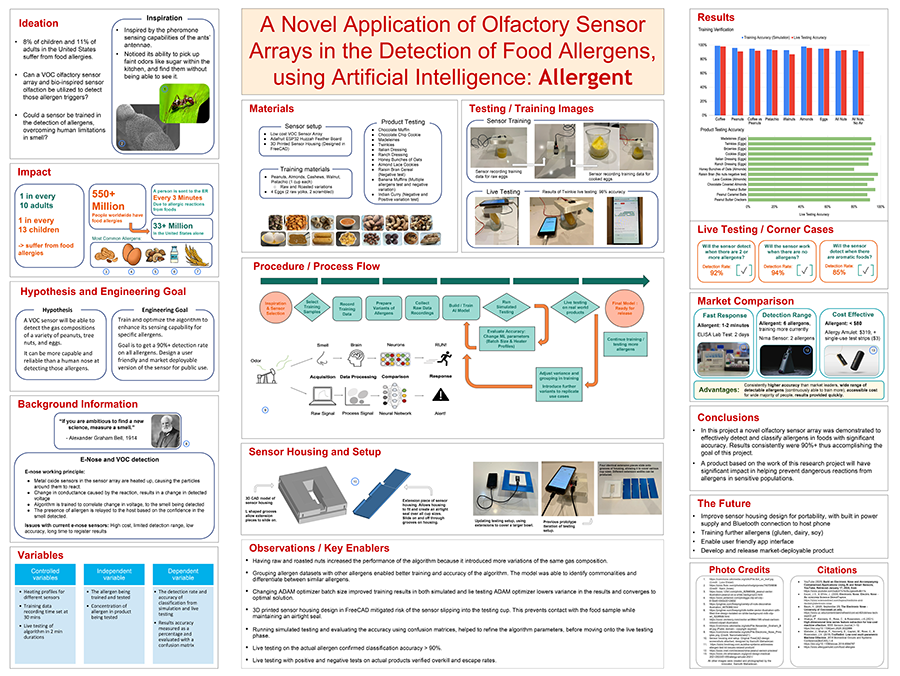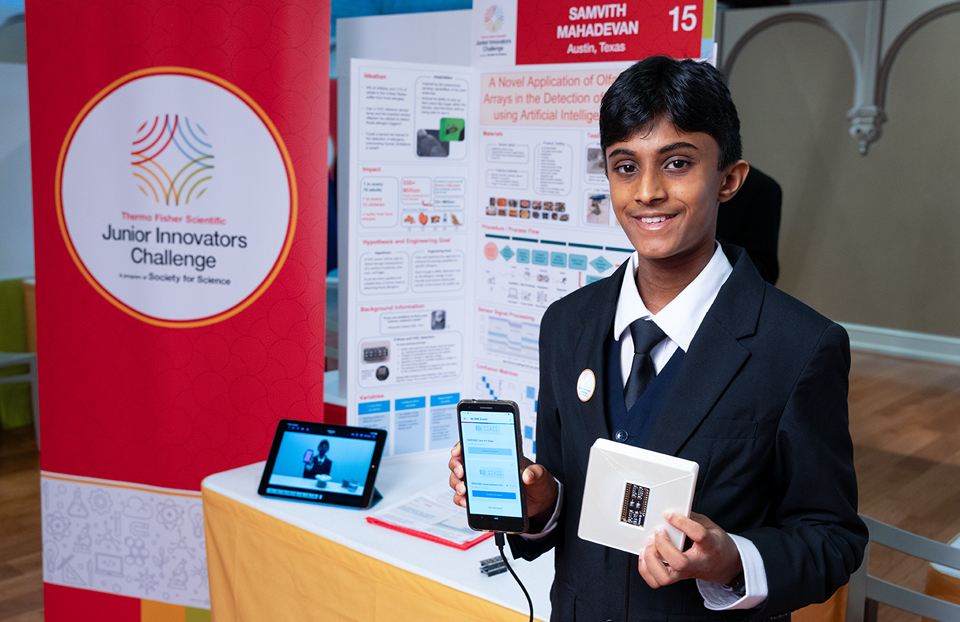Samvith Mahadevan
7th Grade, Canyon Vista Middle School
Austin, TX
Like many people, Samvith suffers from severe food allergies. “I have eagerly eaten foods, only to feel the itchy mouth, throat contractions and swollen eyes that are all tell-tale signs of an allergic reaction,” he says. He was frustrated that current allergen sensors were so expensive and require contact with food — making them not very useful in daily life. Inspired by how accurately ants seem to find food, Samvith decided to train a volatile organic compound (VOC) sensor, using machine learning, to identify allergens by “smell.”
Novel Application of Olfactory Sensor Arrays in the Detection of Food Allergens Using Artificial Intelligence
View Poster
Project Background
Samvith started with a low-cost VOC sensor ($60-80), and hooked it up to a kit to make it Bluetooth compatible. He trained the sensor with a machine learning program, exposing the sensor to samples of peanuts, eggs, pistachios, almonds, cashews and walnuts. “One of the main limitations of testing was that I am severely allergic to cashews and walnuts,” Samvith says. “So, for training those allergens, I provided instructions to my mom and monitored the data collection remotely while my mom operated the sensor.”
After training his program over 2,048 rounds of testing, Samvith tested his sensor on real world products with allergens, like Twinkies, almond lace cookies, peanut butter caramel balls, curries and muffins. His “nose” was able to identify allergens at between 94 and 97 percent accuracy.

Beyond the Project
Samvith loves sports, including football, basketball, swimming, track and table tennis. He also likes to create graphic novels and animations. He also helps his community via the Young Changemaker Journey Program. With the program, Samvith got funding to install a bike rack at a shopping center to help people get around without cars. “It is extremely fulfilling to see the rack in daily use,” he says. He would like to be a biomedical engineer.

